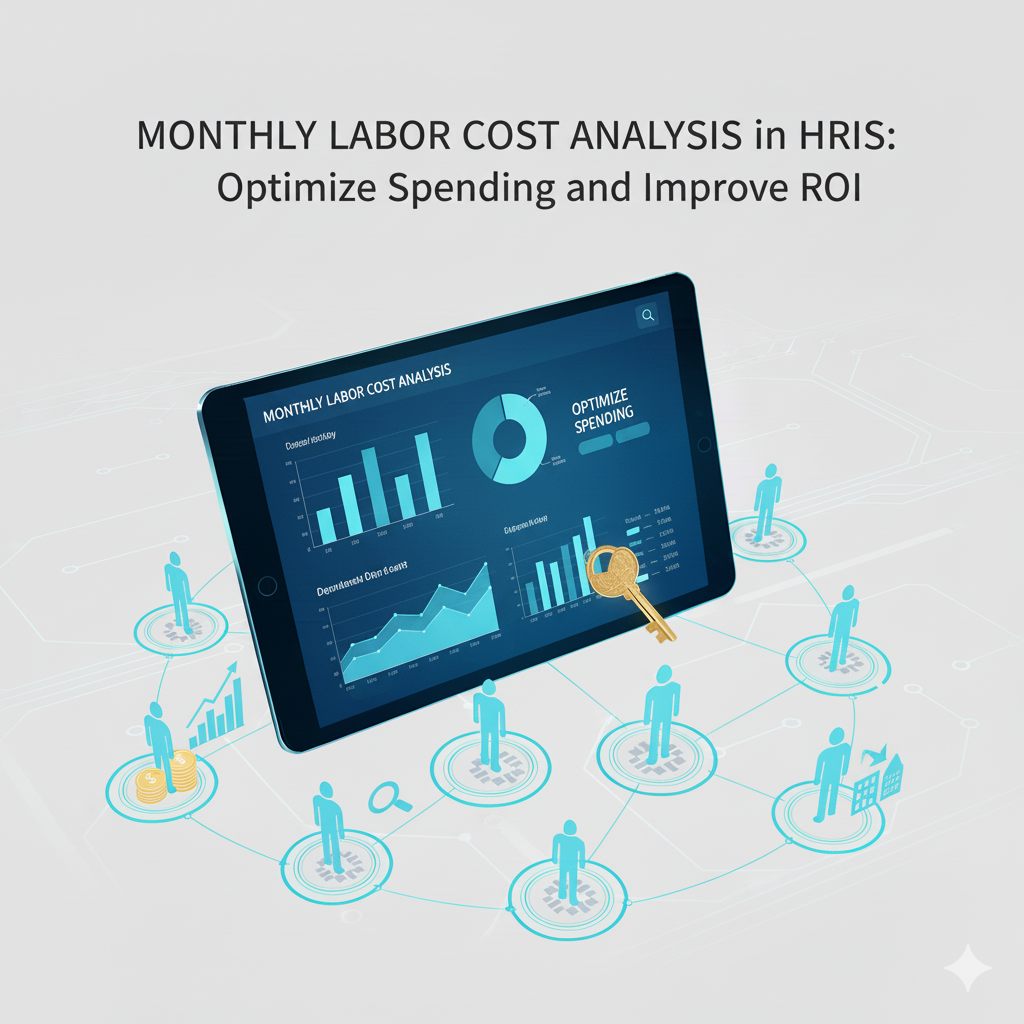Address
Kaypian, San Jose Del Monte City, Bulacan Philippines
Work Hours
Monday to Friday: 8AM - 6PM
Weekend: 10AM - 5PM
Address
Kaypian, San Jose Del Monte City, Bulacan Philippines
Work Hours
Monday to Friday: 8AM - 6PM
Weekend: 10AM - 5PM


Integrated HR. Accurate Payroll.


Integrated HR. Accurate Payroll.

Labor costs are one of the largest expenses for any business — and understanding where those costs go each month is critical for profitability. Without proper analysis, you risk overspending, underutilizing staff, and missing opportunities to improve efficiency.
This is where Monthly Labor Cost Analysis through a Human Resource Information System (HRIS) becomes a game-changer. By providing a clear, detailed view of your workforce expenses, HRIS empowers HR and finance teams to optimize spending and maximize return on investment (ROI).
In this article, we’ll discuss what monthly labor cost analysis is, why it’s essential, and how HR teams can use it to make smarter financial and workforce decisions.
Monthly Labor Cost Analysis is the process of reviewing and breaking down your organization’s labor expenses for a specific month.
A modern HRIS automatically collects data from:
The result is a comprehensive monthly report that shows the true cost of employing your workforce.
By understanding how much is spent on labor each month, finance teams can set realistic budgets and forecast future expenses with confidence.
Analysis reveals trends such as excessive overtime or high absenteeism, giving HR the chance to take corrective action.
Labor costs can be compared to revenue or productivity, allowing management to evaluate whether resources are being used efficiently.
With detailed reporting, you can ensure contributions, deductions, and tax withholdings are accurate and submitted on time.
Having access to accurate monthly data helps HR and management decide whether to hire, redistribute workloads, or adjust schedules.
When choosing an HRIS, look for features that make monthly labor cost analysis easy and actionable:
Whether you run a private company or a Local Government Unit (LGU), monthly labor cost analysis can:
Monthly labor cost analysis isn’t just an accounting exercise — it’s a strategic process that helps businesses stay efficient and competitive.
With an HRIS, HR teams can automate this process, generate accurate reports, and give management the insights they need to control costs, improve productivity, and maximize ROI.
If your organization is still relying on manual spreadsheets to track labor expenses, now is the time to switch to a modern HRIS & Payroll System. Doing so will save time, reduce errors, and provide the financial clarity you need to grow your business.